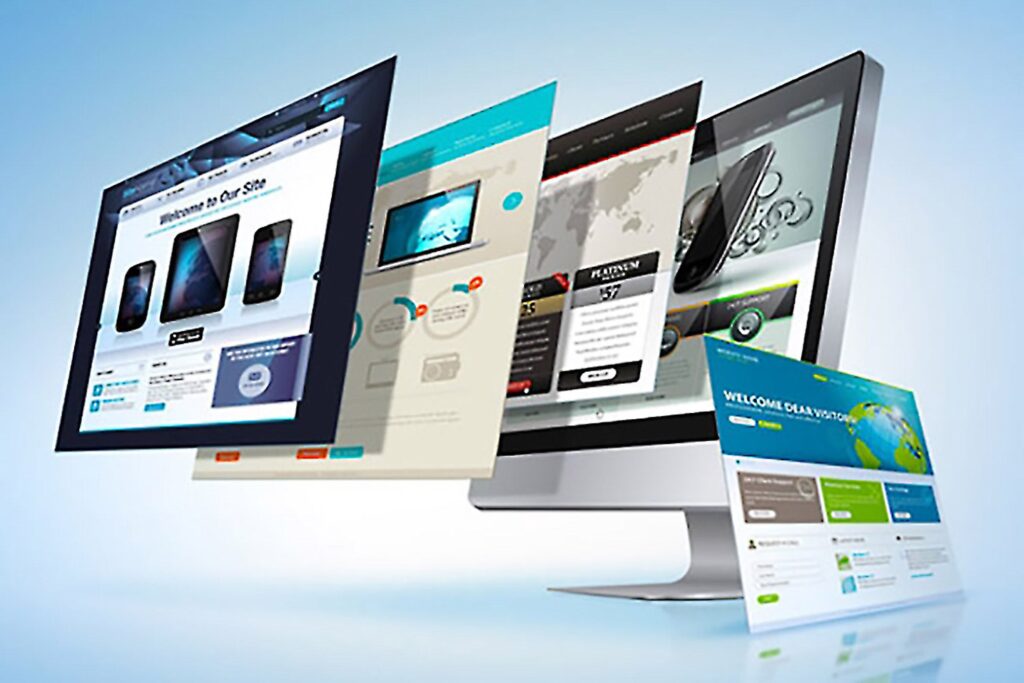In the ever-evolving digital landscape, your website serves as the virtual storefront of your brand. The design of your website is not just about aesthetics; it’s an immersive experience that shapes perceptions, fosters engagement, and leaves a lasting impression. In this blog, we’ll guide you through the creative journey of designing a website, breaking down the process into different key elements.
Section 1: Defining Your Digital Vision
1.1 Discover Your Brand Identity
Before diving into design elements, take a step back to define your brand identity. What colors, fonts, and visual elements align with your brand personality? Consider your target audience and the emotions you want your brand to evoke.
1.2 Establish Clear Objectives
Clearly outline the goals and objectives of your website. Whether it’s e-commerce, brand awareness, or lead generation, having a clear purpose will guide design decisions and ensure a user-centric approach.
Section 2: Building a User-Focused Structure
2.1 Plan Intuitive Navigation
Create a user-friendly navigation structure. Map out the user journey, ensuring that visitors can easily find the information they seek. Consider implementing intuitive menu designs and clear calls-to-action.
2.2 Responsive Design for Multi-Device Access
Prioritize responsive design to ensure your website functions seamlessly across various devices. A responsive layout enhances user experience and supports your site’s visibility on search engines.
Section 3: Crafting Engaging Visuals
3.1 Visual Hierarchy for Information Flow
Establish a visual hierarchy that guides users through the content. Use contrasting colors, typography, and size to prioritize key information, creating a seamless flow of engagement.
3.2 Utilize High-Quality Imagery
Incorporate high-quality, relevant imagery to enhance the visual appeal of your website. Authentic visuals not only capture attention but also contribute to conveying your brand story effectively.
Section 4: Choosing the Right Color Palette and Typography
4.1 Harmonize Colors with Brand Personality
Select a color palette that aligns with your brand identity. Consider the psychological impact of colors and how they contribute to conveying the desired emotions.
4.2 Typography: Balance Legibility and Style
Choose fonts that strike a balance between legibility and style. Consistent typography across your website maintains visual coherence and readability.
Section 5: Interactive Elements for Engagement
5.1 Incorporate Engaging Multimedia
Enhance user engagement with multimedia elements such as videos, sliders, or interactive graphics. Thoughtfully integrate these elements to complement your content.
5.2 Implement User-Friendly Forms
If your website involves user interaction through forms, design them for ease of use. Streamline the form-filling process, request only essential information, and provide clear instructions.
Section 6: Optimizing for Performance and SEO
6.1 Optimize Load Times
Ensure your website loads swiftly by optimizing images, using efficient coding practices, and leveraging browser caching. Fast load times contribute to a positive user experience.
6.2 SEO-Friendly Design Practices
Implement SEO-friendly design practices by optimizing meta tags, incorporating descriptive alt text for images, and creating a clean URL structure. A well-optimized website improves search engine visibility.
Conclusion: A Masterpiece Unveiled
Designing a website is a harmonious blend of creativity, functionality, and user-centricity. By carefully considering each element—from brand identity to interactive features and SEO optimization—you’re not just crafting a website; you’re creating a digital masterpiece that resonates with your audience. Embrace the creative journey, adapt to user feedback, and watch as your website becomes a captivating canvas that reflects the essence of your brand.

